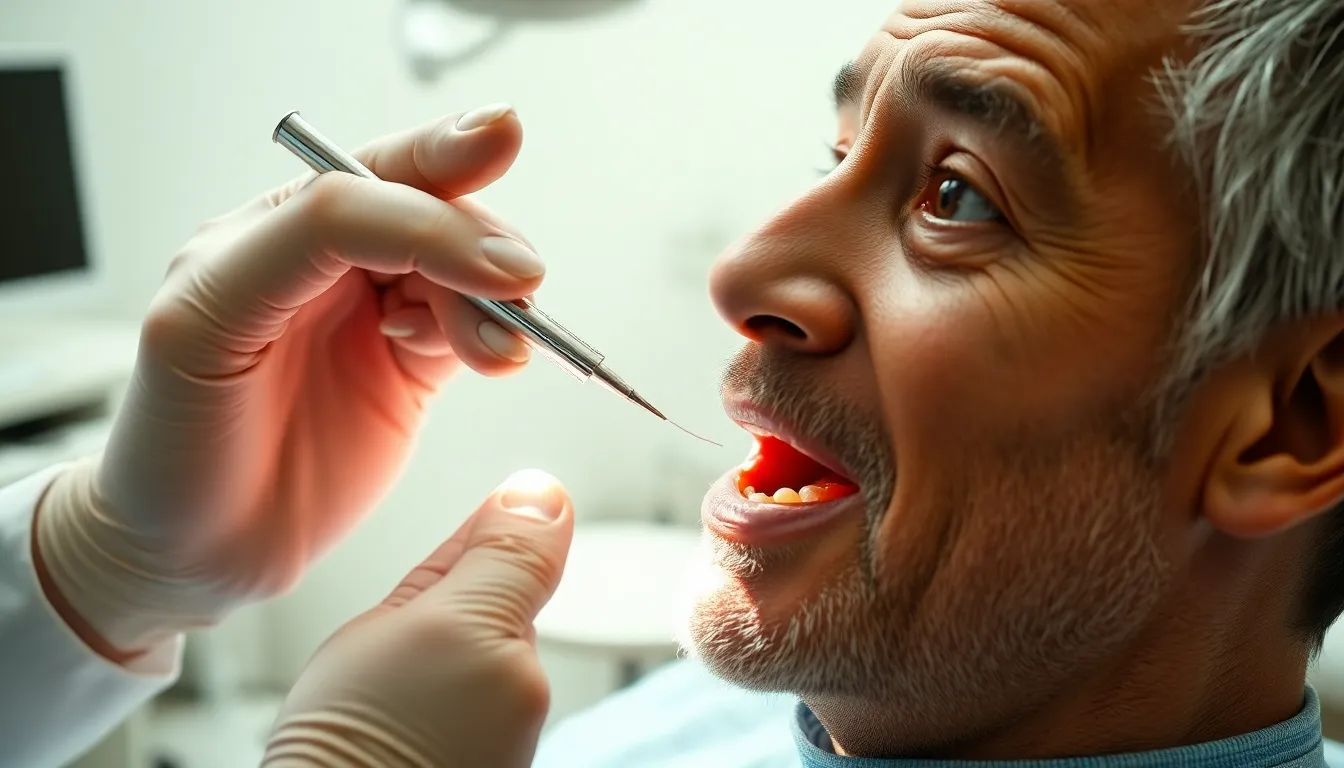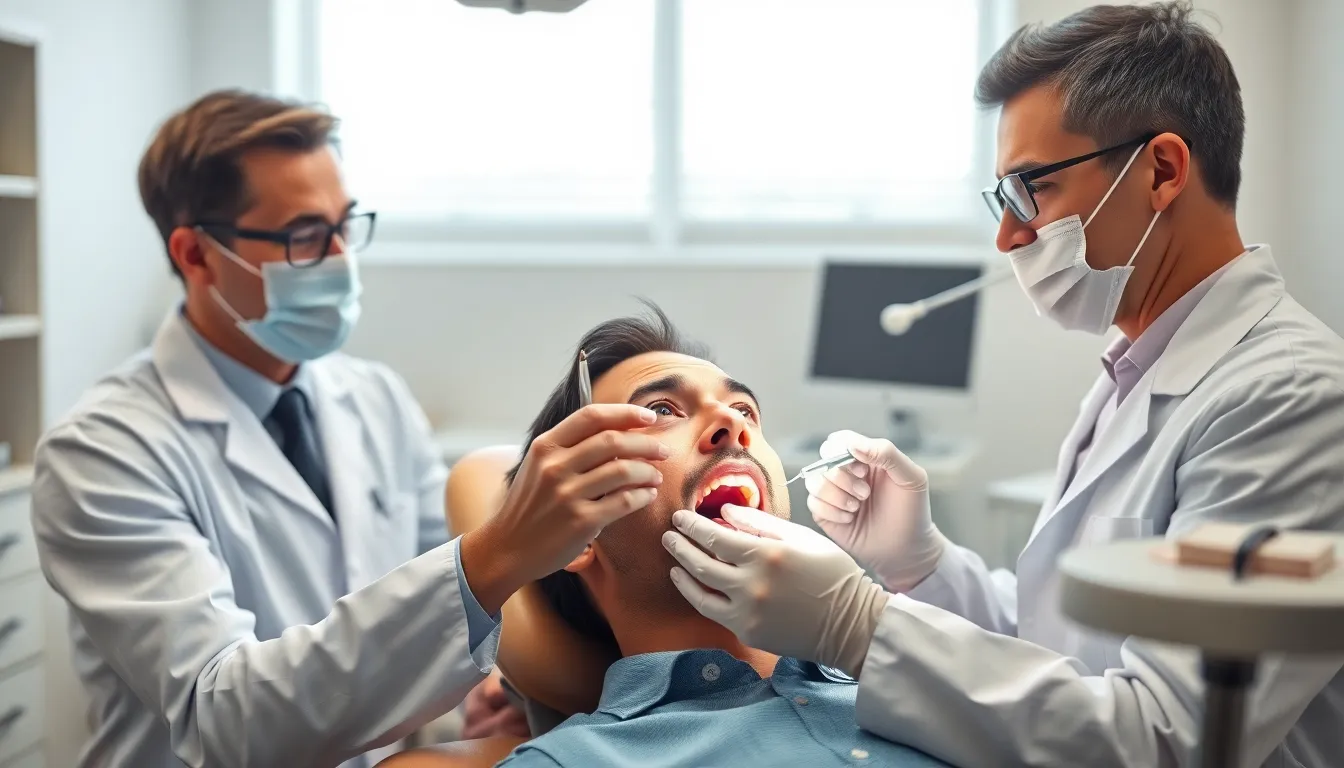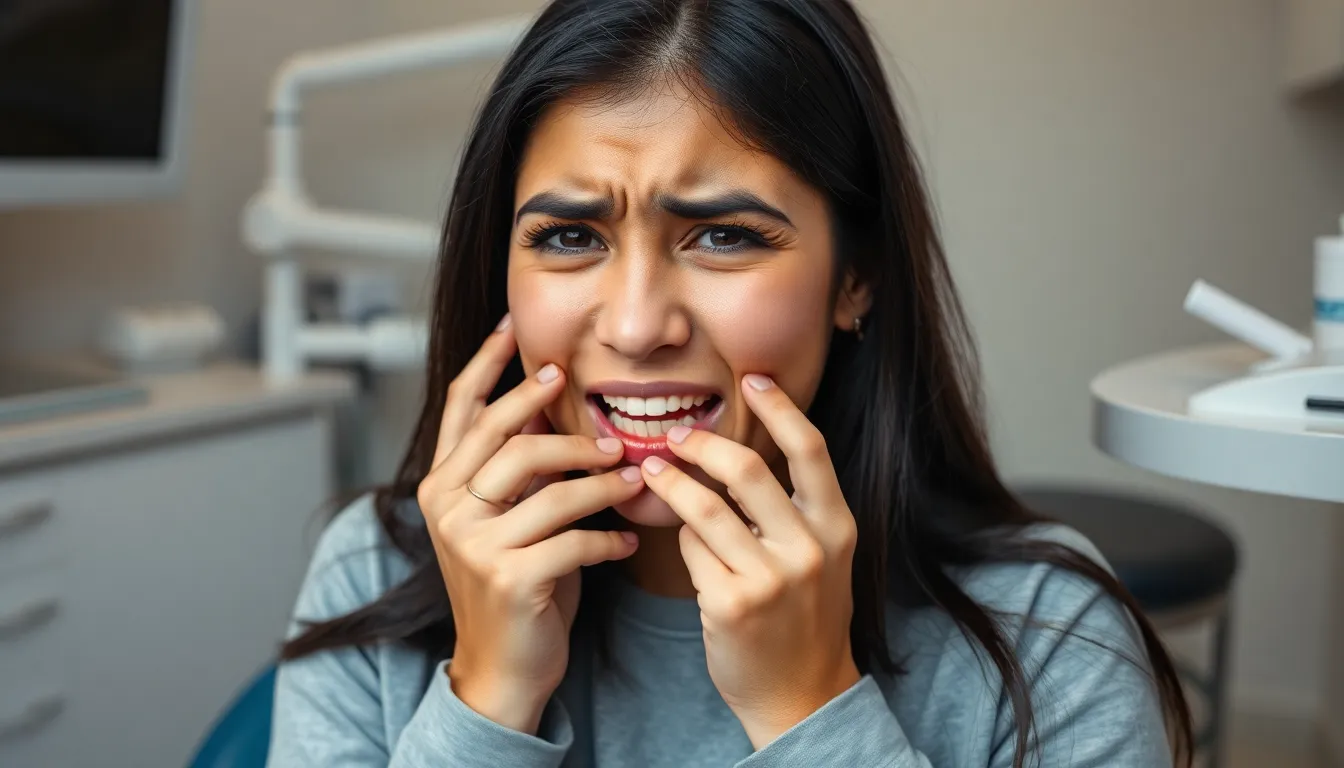Are bite turbos giving you trouble with your orthodontic treatment? These small dental appliances play a crucial role in correcting bite issues and ensuring your braces work effectively, yet many patients find them challenging to adjust to.
When your orthodontist attaches bite turbos to your teeth, they’re strategically positioning these small bumps to prevent your upper and lower teeth from making complete contact. This intentional gap helps correct overbites, underbites, or crossbites while protecting your brackets from damage. Though temporarily uncomfortable, bite turbos are essential components that significantly reduce your overall treatment time and improve final results.
What Is a Bite Turbo?
Bite turbos are small dental attachments bonded to teeth during orthodontic treatment to create space between upper and lower teeth. These tooth-colored acrylic or composite resin devices prevent complete closure of your bite while braces are in place. Orthodontists strategically position bite turbos on exact teeth—typically molars or the backs of front teeth—depending on your particular bite issue.
Dr. Todd B. Harris explains, “Many patients are surprised by how such a small addition to their orthodontic treatment can make such a important difference. I’ve seen bite turbos dramatically reduce treatment time for patients with severe overbites who would otherwise face years of correction.”
One patient, Sarah, shared her experience: “When my orthodontist first mentioned bite turbos, I was concerned about how they’d affect my speech and eating. After the initial adjustment period of about a week, I barely noticed them, and my severe overbite improved much faster than expected.”
Bite turbos serve multiple purposes in orthodontic treatment:
- Creating space between teeth to prevent bracket interference
- Reducing pressure on brackets during biting
- Facilitating faster tooth movement in exact directions
- Preventing damage to brackets when biting down
- Correcting deep bites more efficiently
The design of bite turbos has evolved significantly, with modern versions being more comfortable and less noticeable than earlier iterations. Each bite turbo is custom-made to fit your exact dental anatomy and treatment needs.
Types of Bite Turbos in Orthodontics

Orthodontists use different types of bite turbos based on your exact treatment needs and bite issues. These small orthodontic appliances play crucial roles in controlling how your upper and lower teeth meet during braces treatment.
Anterior Bite Turbos
Anterior bite turbos are typically bonded to the palatal (tongue) surface of your upper central incisors. Orthodontists sometimes place them on lateral incisors as an alternative, though this is less common due to concerns about the root/crown ratio. These turbos effectively address deep bites and anterior crossbites, particularly in Class II malocclusion cases with important overbites and overjets.
Dr. Todd B. Harris explains, “Anterior bite turbos create just enough separation between the teeth to prevent damage to lower brackets while allowing for more efficient tooth movement. Many of my patients with deep bites see remarkable improvements in their bite alignment within just a few months of wearing these devices.”
The placement of anterior bite turbos offers several advantages for your orthodontic treatment:
- Creates space to safely bond lower anterior brackets
- Accelerates correction of front tooth misalignments
- Provides effective intervention for deep bite cases
- Protects lower braces from damaging contact with upper teeth
One patient, Michael, initially struggled with speech changes after getting anterior bite turbos. “The first week was challenging—I had a slight lisp and felt like my mouth was always partially open. By week three, I barely noticed them, and my orthodontist showed me how my bite was already improving.”
Posterior Bite Turbos
Posterior bite turbos are positioned on the biting surfaces of your back molars. These turbos are particularly effective for treating open bites and posterior crossbites by controlling occlusion and guiding proper tooth movement. They create strategic interference that prevents you from biting down completely, which protects your lower braces and facilitates more controlled tooth movement.
Originally made from acrylic materials, modern posterior bite turbos are predominantly metal constructions. The metal versions offer superior durability and better hygiene compatibility throughout your treatment. Their application requires precision due to the complex anatomy of molar teeth.
“Posterior bite turbos work like training wheels for your bite,” notes Dr. Harris. “They guide your jaw into the correct position while we’re moving teeth into alignment. For patients with crossbites, they’re often the key to achieving lasting corrections without jaw surgery.”
Patients with posterior bite turbos typically experience:
- More efficient correction of posterior tooth alignment issues
- Protection for orthodontic appliances against biting forces
- Gradual improvement in overall bite function
- Reduced treatment time for complex bite issues
Though you’ll likely feel some discomfort and chewing difficulties during the initial adjustment period, these symptoms typically diminish within a few weeks as you adapt to your new bite configuration.
Benefits of Bite Turbos in Orthodontic Treatment
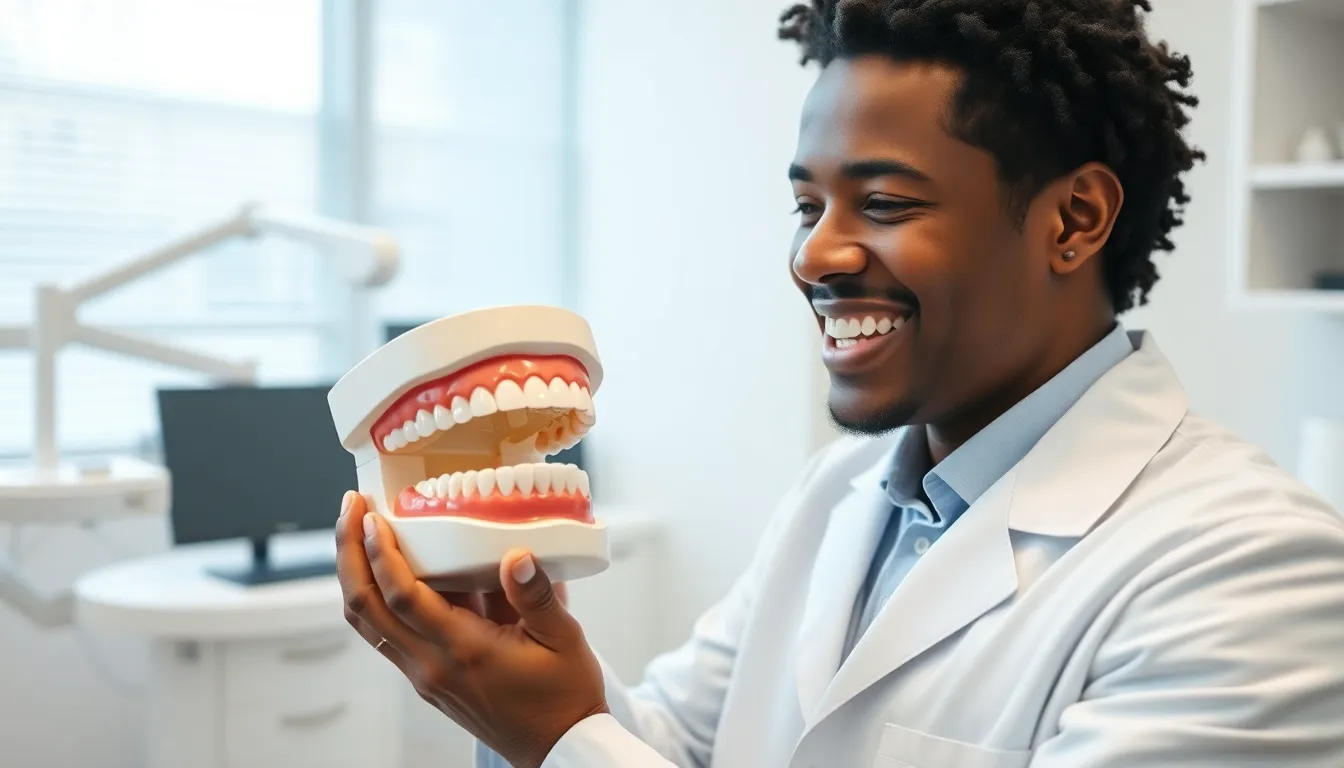
Bite turbos deliver several important advantages during orthodontic treatment, functioning as strategic barriers between upper and lower teeth. These small but powerful appliances contribute to treatment success in multiple ways.
Preventing Bracket Interference
Bite turbos create an essential physical barrier between your top and bottom teeth, effectively preventing damage to brackets and wires. By keeping your teeth from fully closing together, they protect lower brackets from the crushing forces of your bite, reducing emergency visits for broken appliances. Dr. Todd B. Harris explains, “The protective function of bite turbos often saves patients from unexpected office visits and helps maintain consistent progress throughout treatment.” Many patients find this benefit particularly valuable during meals, as the turbos eliminate concerns about damaging their orthodontic hardware when chewing firmer foods.
Accelerating Treatment Time
Your orthodontic treatment progresses more efficiently with bite turbos, often reducing overall time in braces. These appliances help teeth move into proper positions faster by managing bite forces and creating optimal conditions for tooth movement. Sarah, a patient who received bite turbos for her deep overbite, shares: “I was initially skeptical about adding more hardware to my mouth, but after seeing how quickly my overbite improved compared to my friend’s treatment without bite turbos, I’m convinced they made a huge difference.” Clinical observations confirm that bite turbos can significantly shorten treatment duration, particularly in cases involving deep bites or complex alignment issues.
Improving Bite Alignment
Bite turbos play a crucial role in correcting various bite problems by guiding your teeth and jaws into proper alignment. They create controlled pressure that helps reshape how your teeth come together, addressing issues like overbites, underbites, and crossbites more effectively than braces alone. The precision of bite turbos allows orthodontists to target exact movement patterns, resulting in better functional outcomes and more aesthetically pleasing results.
Improving Patient Comfort
Even though initial adjustment periods, bite turbos actually improve overall comfort during orthodontic treatment. By preventing complete closure of your jaw, they reduce pressure on sensitive teeth and brackets. “Though patients might experience some awkwardness for the first 3-5 days,” notes Dr. Harris, “most quickly adapt and report less discomfort during their treatment compared to what they anticipated.” This reduced pressure particularly benefits patients with temporomandibular joint (TMJ) issues who might otherwise experience jaw strain from normal biting patterns while wearing braces.
Creating Space for Crowded Teeth
For patients with important dental crowding, bite turbos provide the necessary space for proper alignment. They function as separators that gently push teeth apart, allowing crowded teeth room to move into their ideal positions. This space-creating benefit is especially valuable in cases where extracting teeth might otherwise be necessary, offering a more conservative approach to treatment. The strategic placement of bite turbos can transform severely crowded dentition into beautifully aligned smiles without more invasive interventions.
Potential Discomfort and Adjustment Period

Your bite will feel noticeably different when bite turbos are first placed, as only two biting surfaces make contact instead of your full set of teeth. This initial sensation can feel strange to your tongue and temporarily complicate normal biting and chewing functions. Many patients report a important adjustment period during the first week after placement.
Eating Challenges
Eating becomes more challenging with bite turbos, particularly during the initial adjustment phase. Softer foods like mashed potatoes, mac ‘n’ cheese, yogurt, smoothies, and tender meats make this transition easier. Dr. Todd B. Harris recommends gradually reintroducing firmer foods as you become accustomed to your new bite configuration.
“Most of my patients find that cutting food into smaller pieces and chewing with their back teeth helps tremendously,” explains Dr. Harris. “The adjustment period varies, but everyone eventually develops new eating patterns that work with their bite turbos.”
Speech Modifications
Your speech patterns may temporarily change after getting bite turbos, with many patients developing a slight lisp. Sounds like “th,” “ch,” “s,” and “z” often require the most adjustment since your tongue must adapt to new surfaces in your mouth. These speech effects typically improve within 1-2 weeks as your mouth adapts.
Jamie, a high school teacher who received bite turbos as part of her orthodontic treatment, shares: “I was worried about teaching with my new lisp, but my students barely noticed after the first day. Within two weeks, my speech returned to normal, and I barely remembered the turbos were there.”
Pain Management
Some mild discomfort or soreness commonly occurs after bite turbo placement but generally subsides within 3-5 days. Over-the-counter pain medications effectively manage this temporary soreness. Applying dental wax to any areas that irritate your cheeks or lips can provide additional relief during the adjustment period.
Duration and Maintenance
Bite turbos typically remain in place for 6-9 months, depending on your individual bite correction progress. Only your orthodontist should remove or replace them if they break or fall off. Maintaining excellent oral hygiene becomes particularly important with bite turbos—brush thoroughly around them and along your gumline to prevent plaque buildup that could lead to decay or gum issues.
Your regular checkup appointments allow your orthodontist to monitor how your bite is changing and determine when the turbos can be safely removed. Most patients find that once they’ve adjusted to their bite turbos, the remaining treatment time passes quickly as they watch their bite correction progress.
How to Care for Your Bite Turbos
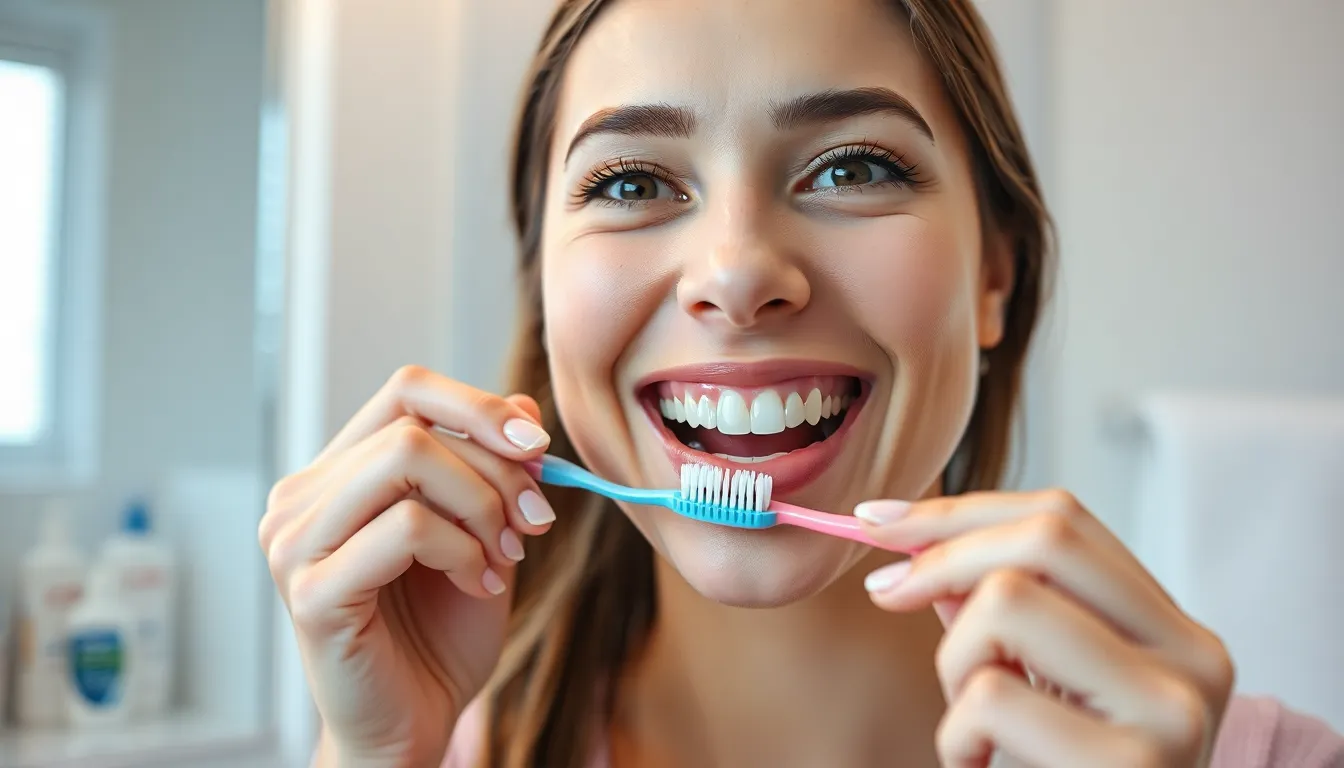
Bite turbos require exact maintenance to ensure they function properly throughout your orthodontic treatment. Proper care not only extends their lifespan but also contributes to your overall oral health while wearing braces.
Eating With Bite Turbos
Adjusting to eating with bite turbos takes time as your bite mechanics temporarily change. During the first few days, you’ll notice that only certain teeth make contact when chewing, which can feel awkward and frustrating. Start with soft foods like yogurt, mashed potatoes, and pasta that require minimal chewing effort. Cut fruits and vegetables into small, bite-sized pieces to make them easier to manage with your altered bite. Avoid hard, sticky, or sugary foods that could damage your bite turbos or other orthodontic appliances. Many patients report that after about a week, eating becomes much more comfortable as they develop new chewing patterns that accommodate the bite turbos.
“The adjustment period varies for each patient,” explains Dr. Todd B. Harris. “While some adapt within days, others might take a couple of weeks to feel comfortable eating their regular diet. Patience during this transition is key to successful treatment outcomes.”
Cleaning Around Bite Turbos
Maintaining excellent oral hygiene around bite turbos prevents decay and gum problems during your orthodontic treatment. Brush your teeth and bite turbos at least twice daily using a soft-bristle toothbrush, applying gentle but thorough pressure to clean all surfaces without damaging the appliance. Floss carefully around the edges of your bite turbos daily to remove food particles and plaque that regular brushing might miss. Regular rinsing with water or an antiseptic mouthwash helps reduce bacteria around the appliances and keeps your mouth fresh. Professional cleanings during your orthodontic check-ups allow for thorough removal of any buildup around the bite turbos that home care might not address.
Proper cleaning becomes especially important because bite turbos create additional surfaces where food can become trapped. Taking extra time to clean these areas thoroughly prevents cavities and ensures your orthodontic treatment progresses without complications related to poor oral hygiene.
How Long Will You Need to Wear Bite Turbos?
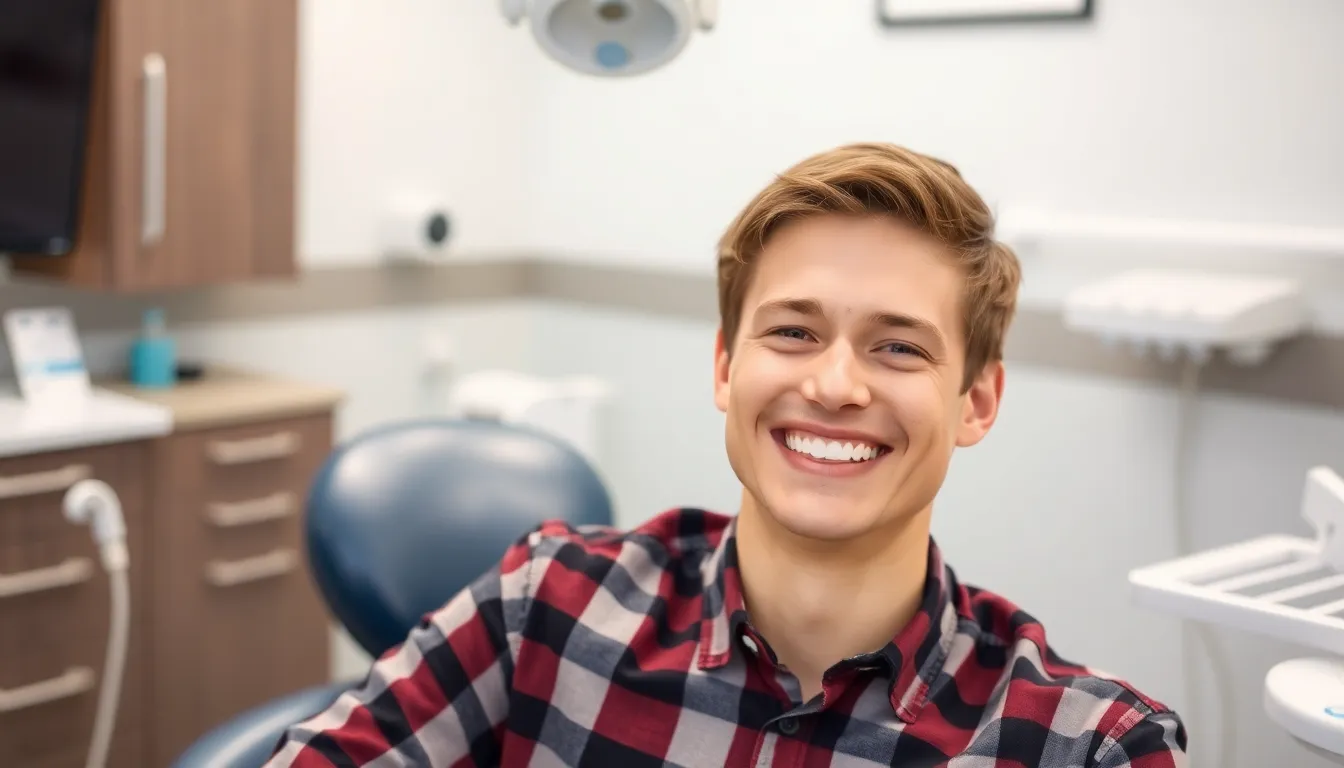
Most patients wear bite turbos for six to nine months during their orthodontic treatment. Your exact treatment duration depends on your individual jaw alignment issues and how quickly your bite responds to correction. Some patients achieve the necessary alignment in just a few months, while others might need their bite turbos for up to a year.
Dr. Todd B. Harris explains, “I evaluate each patient’s progress at regular appointments to determine the optimal time for bite turbo removal. The goal is to keep them on only as long as necessary to achieve proper bite correction.”
Your orthodontist monitors several factors when deciding when to remove your bite turbos:
- Resolution of the original bite problem
- Stability of your new jaw alignment
- Protection needs for your other orthodontic appliances
- Overall progress of your treatment plan
“When I first got my bite turbos, I was worried about how long I’d need them,” shares Marcus, a recent patient. “After about seven months, Dr. Harris removed them, and I was amazed at how much my bite had improved. The time passed much faster than I expected, especially once I adjusted to having them.”
Your bite turbos remain firmly attached to your teeth until your orthodontist determines they’re no longer needed. If a bite turbo breaks or falls off before your scheduled removal date, contact your orthodontist immediately rather than attempting to fix it yourself.
Alternatives to Bite Turbos
While bite turbos remain a popular orthodontic solution for bite correction, several alternative options exist for patients with exact needs or preferences. Each alternative offers unique advantages but comes with distinct limitations compared to fixed bite turbos.
Removable Bite Planes
Removable bite planes are acrylic devices that separate the teeth while allowing patients to take them out for eating and cleaning. These appliances work similarly to bite turbos but don’t provide the consistent pressure that fixed options deliver.
“Many of my patients initially ask about removable options,” says Dr. Todd B. Harris. “They’re attracted to the convenience of taking them out, but I find compliance becomes the biggest hurdle. Bite turbos typically produce faster results because they’re working 24/7.”
Jessica, a 32-year-old professional, tried removable bite planes before switching to bite turbos: “I thought I’d prefer something I could remove, but I kept forgetting to put them back in. My treatment stalled for months until I got bite turbos, which solved my overbite in just 6 months.”
These removable devices can irritate oral mucosa and require strict patient compliance to be effective. They’re typically recommended for mild cases or patients who can’t tolerate fixed appliances.
Metal Bite Blocks
Metal bite blocks represent an earlier approach to bite correction with strong muscle deprogramming effects. These metal appliances create more important separation between teeth but present application challenges for orthodontists.
Their bulkier design makes them less comfortable than modern bite turbos, and patients often report more speech difficulties with these traditional options. Metal bite blocks remain useful in exact cases requiring substantial bite opening but have largely been replaced by more streamlined alternatives.
Clear Aligners with Bite Ramps
Clear aligner systems now incorporate built-in bite ramps that function similarly to bite turbos. These raised sections on exact teeth within the aligner create the necessary separation to address bite issues while maintaining the aesthetic advantage of nearly invisible treatment.
“Clear aligners with bite ramps offer an excellent alternative for patients concerned about appearance,” explains Dr. Harris. “But, they’re most effective for mild to moderate bite corrections rather than severe cases that bite turbos can address.”
The effectiveness of aligner bite ramps depends on wearing the aligners for 20-22 hours daily, making patient compliance critical to successful treatment outcomes.
Customized Brackets
Some modern bracket systems feature built-in bite-opening mechanisms designed to modify occlusal contact without additional appliances. These specialized brackets incorporate raised portions that prevent full bite closure while still performing traditional bracket functions.
These integrated systems eliminate the need for separate bite turbos but may not provide enough bite opening for severe cases. Their advantage lies in simplified treatment mechanics and potentially improved patient comfort.
| Alternative | Key Benefit | Primary Limitation |
|---|---|---|
| Removable Bite Planes | Can be removed for eating | Requires patient compliance |
| Metal Bite Blocks | Strong muscle deprogramming | Harder to apply and less comfortable |
| Clear Aligners with Ramps | Aesthetically pleasing | Limited to mild/moderate corrections |
| Customized Brackets | Simplified treatment | May not provide enough bite opening |
The selection of an appropriate bite-opening mechanism depends on your exact orthodontic needs, lifestyle considerations, and treatment goals. Your orthodontist will recommend the most suitable option after a comprehensive evaluation of your bite dynamics and overall oral health.
Conclusion
Bite turbos play a vital role in modern orthodontic treatment far beyond what most patients initially realize. These small but powerful dental appliances can transform your orthodontic journey by protecting your braces creating necessary space and significantly reducing overall treatment time.
While you’ll experience an adjustment period with some temporary discomfort and speech changes the benefits far outweigh these short-term challenges. Your orthodontist will carefully monitor your progress ensuring the bite turbos remain in place only as long as necessary.
With proper care and patience bite turbos will help you achieve that perfectly aligned smile more efficiently. Trust the process and you’ll soon appreciate how these small additions to your orthodontic treatment contribute to lasting beautiful results.
Frequently Asked Questions
What are bite turbos in orthodontic treatment?
Bite turbos are small dental attachments bonded to teeth during orthodontic treatment. They create space between upper and lower teeth, preventing complete contact while protecting braces from damage. Typically positioned on molars or the backs of front teeth, they help correct various bite issues such as overbites, underbites, and crossbites while reducing overall treatment time.
How long do I need to wear bite turbos?
Most patients wear bite turbos for 6-9 months, depending on their specific jaw alignment issues and treatment response. Your orthodontist will monitor your progress to determine the optimal time for removal, ensuring your bite problem is resolved and the new jaw alignment is stable before taking them off.
Do bite turbos cause speech problems?
Temporary speech changes, particularly a lisp with certain sounds, are common after bite turbo placement. However, these speech issues typically resolve within 1-2 weeks as your mouth adapts to the new appliances. Most patients find their speech returns to normal after this initial adjustment period.
Will bite turbos be painful?
Mild discomfort or soreness is common for the first few days after bite turbo placement. This initial discomfort usually subsides within 3-5 days as you adjust to the new bite position. Over-the-counter pain medications can provide relief during this adaptation period. The temporary discomfort is outweighed by the faster treatment results.
Can I eat normally with bite turbos?
Initially, eating with bite turbos requires adjustment since your teeth won’t close completely. Start with softer foods and cut food into smaller pieces during the first week. Gradually reintroduce firmer foods as you adapt. Avoid hard, sticky, or sugary foods that could damage the appliances. Most patients adjust to eating normally within 2-3 weeks.
How do I clean around bite turbos?
Maintaining excellent oral hygiene around bite turbos is crucial. Brush carefully around the attachments using a soft-bristled toothbrush and fluoride toothpaste. Use floss threaders or interdental brushes to clean between teeth and around the turbos. Regular rinsing with water or mouthwash helps remove food particles. Professional cleanings during orthodontic check-ups are also recommended.
What happens if a bite turbo breaks or falls off?
If a bite turbo breaks or falls off, contact your orthodontist promptly rather than attempting to fix it yourself. Your orthodontist will determine if the bite turbo needs to be replaced or if treatment can proceed without it. Continuing without a necessary bite turbo could extend your treatment time or compromise results.
Are there alternatives to bite turbos?
Alternative orthodontic solutions include removable bite planes, metal bite blocks, clear aligners with bite ramps, and customized brackets. Each option has advantages and limitations based on the severity of your bite issues. Your orthodontist will recommend the most suitable option after evaluating your specific orthodontic needs, lifestyle considerations, and treatment goals.



